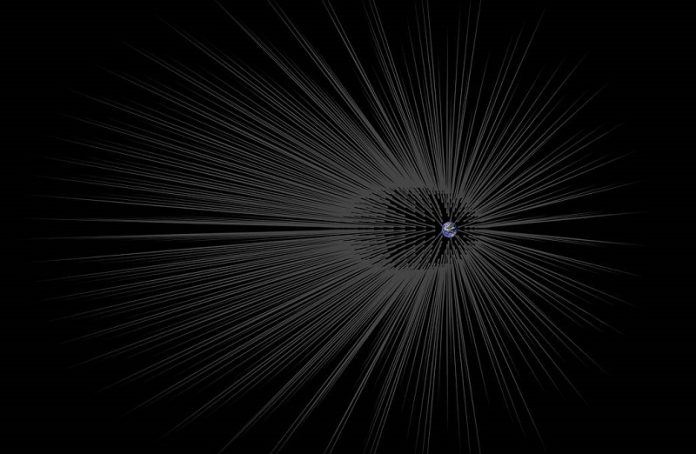
Have you ever heard of dark matter?
It’s one of space’s biggest puzzles.
Even though it makes up about 85% of all the matter in the universe, we still don’t really know what it is.
But now, a group of smart scientists believe they might have a new way to learn more about this mysterious stuff. Their secret tool? Gravitational waves!
What’s the Big Deal with Dark Matter?
Imagine the universe as a giant puzzle, and a big piece of that puzzle is missing. That missing piece is dark matter.
We can’t see it, touch it, or understand it fully yet. But it’s out there, and it plays a huge role in how our universe works.
The problem is, we’re not sure if dark matter particles can bump into other particles or just pass right through them. This question is essential because it changes how galaxies, the massive clusters of stars, form.
The New Approach
Now, let’s talk about gravitational waves. These are like ripples in the space-time fabric caused by big events, like when two black holes crash into each other. When this happens, it sends out waves, similar to how tossing a stone in a pond sends out ripples.
In a recent study presented at a big astronomy meeting, scientists said they might have found a new way to study dark matter using these gravitational waves.
They did some computer simulations (basically, super-smart computer guesses) and saw something interesting.
If dark matter can bump into other particles, there are fewer black holes merging or crashing into each other. This means fewer gravitational waves. So, by counting how many of these black hole crashes we can detect, we might figure out more about dark matter!
Right now, our current equipment can’t catch this difference in gravitational waves. But the good news? Bigger and better tools are being made that could do just that.
Why Is This Important?
Dr. Alex Jenkins, a big brain behind the study, says that gravitational waves can be a game-changer.
These waves will let us see deeper into space and time than ever before. And with the new tools coming up, we’ll be able to spot hundreds of thousands of black-hole crashes every year! That’s a lot of data to help us understand not only dark matter but also how galaxies form and change over time.
Another scientist, Dr. Sownak Bose, adds that this mystery of dark matter is something we really need to solve. And as we keep finding new ways to study it, like with gravitational waves, we get closer and closer to putting that missing puzzle piece in its place.
The universe is full of mysteries. And as we keep looking, listening, and studying, we get better at understanding them. This new idea of using gravitational waves to learn about dark matter is exciting.
It’s like tuning into a cosmic radio station, waiting to hear the secrets of the universe whispered to us. And who knows? Maybe one day, we’ll fully unravel the mystery of dark matter, thanks to these ripples in space-time.
The study was published in the journal Physical Review D.
Follow us on Twitter for more articles about this topic.
Source: University College London.



